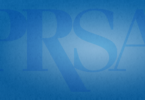By Revenue Task Force – Mark McClennan, APR/Chair; Kelly Davis, APR; Kathleen Rennie, PhD, APR, Fellow PRSA; Elise Mitchell, APR, Fellow PRSA; Paula Pedene, APR; Debra Peterson, APR; David Rickey, APR; Amy Robinson, APR; and Philip Tate, APR, Fellow PRSA.
The SMART dues proposal results directly from the Leadership Assembly’s directive to find a new revenue solution for the Society. With that challenge posed after a large (13.3%) dues increase in 2011, the board created the Revenue Task Force in 2014 (comprised primarily of non-National Board members) to look at options and return to the Leadership Assembly with a solution.
Unanimously, we are recommending the SMART dues approach to put the Society on a stable platform for financial management into the future. The level of due diligence to arrive at this point is extensive, but worth reviewing as we consider Amendment 1502 for approval at the upcoming business meeting in November.
First, more than 30 non-dues revenue generation streams were identified and assessed for viability. Of those, only three were not being done by PRSA. Two of those, consulting services and compensation studies, were deemed either to be unfeasible or to require further review to determine their financial value. Online Education Programming is one area that PRSA is currently leveraging through the new Learning Management System. We’re already seeing this as a successful addition to our professional development offerings.
We then turned to our dues structure. This involved a great deal of research to look at alternative approaches. The Task Force focused on five approaches to determine whether the Society should or could implement a different dues structure. We modeled the budget impact and how this could affect PRSA in the future. The top five approaches we considered were:
- Flat Rate
- Status Quo
- Board Sets Dues
- Tie to Consumer Price Index (CPI)
- Something new – SMART dues
As the Task Force delved deeper into the various options, it was clear we wanted to maintain the spirit of PRSA and our governance structure. Our Leadership Assembly is a key facet of the organization and brings insight and perspective to our process. With that as a guiding factor, ultimately the SMART dues approach rose to the top as the optimal solution to alleviate crisis-driven large dues increases, encourage continued expense management and allow the Leadership Assembly to focus on other issues while maintaining its traditional role.
When reviewed carefully, the other options were not viable or fiscally responsible. Lower, flat-rate dues, appears at first glance to be an attractive choice. Let’s lower dues and attract more members. It sounds good, but if we moved to a $199 flat dues structure we would need a 25% increase in overall membership to generate an additional $49. This growth doesn’t happen (PRSA has had a 1% annual growth in recent years) and it doesn’t solve the issue of how to manage dues increases in the future.
Sticking with the status quo didn’t hold true to the task put forth by the Leadership Assembly. The Assembly clearly communicated, if it was a major dues increase they wanted to have a say, but otherwise, they wanted their time and Chapter resources, and the National Board’s time and resources focused on other issues of great importance to the Society and bringing value to our members.
If you look at the vast majority of member organizations, an overwhelming amount of them have their National Board set dues and perform this function without input from the membership ranks. While this may simplify the process in some regard, this approach was not a good fit for PRSA’s form of governance and the role of our Leadership Assembly. We rejected this immediately, for we wanted to maintain Leadership Assembly involvement.
We could align dues increases with the CPI index. This was one of the more common suggestions we heard from some in the Leadership Assembly. Again, this appeared to be a relatively simple method, yet it has too many drawbacks. The long term dues increase would be greater than other options, and it would not encourage continued examination of our bottom line to look at ways to reduce expenses.
This led the Task Force to look at alternative systems – that something new that could address revenue generation, provide fiscal stability and give leadership the opportunity to focus strategically. SMART dues quickly rose to the top of this fact-finding process. Strategic Management of Association Resources in Tandem (SMART) met all the criteria – flexibility, opportunity and the continued maintenance of PRSA’s current governance structure. This structure has been unanimously recommended by the Task Force for approval.
The SMART dues structure will establish parameters for the board of no more than a 5% dues increase in a 5-year period, to address operational needs while preserving the Leadership Assembly’s governance responsibility. This marriage of fiscal accountability and strategic focus will free the Assembly process from administrative tasks and enable more time for strategic thinking to guide the Society into the future. Should the need arise for a dues increase greater than 5%, the proposal would still go before the Assembly. With Amendment 1502 the Assembly will have annual updates on dues projections as part of the annual meeting and Treasurer’s report.
To be clear. There will be no dues increase for 2016. With the SMART dues approach, PRSA can invest in member benefits and ensure delivery of services. The due diligence to solve the Leadership Assembly’s directive is a change needed to ensure the Society’s financial future. As members of the Task Force we encourage the Leadership Assembly to approve Amendment 1502.






